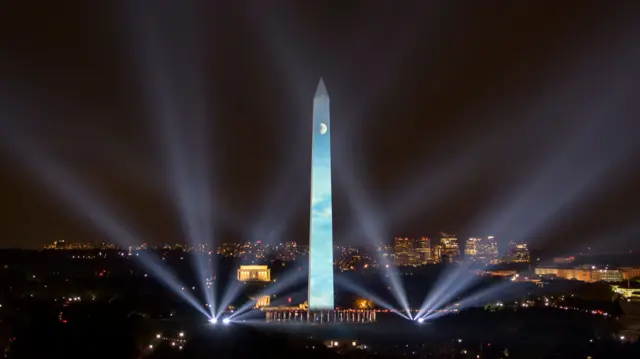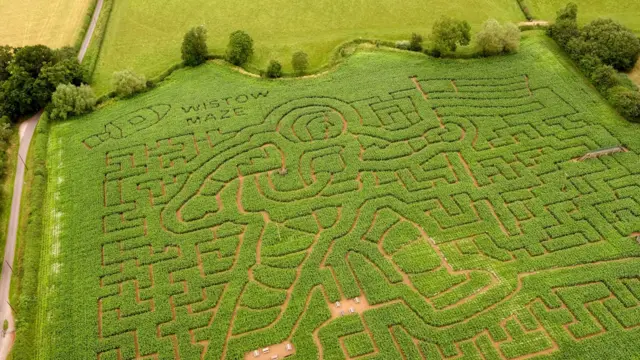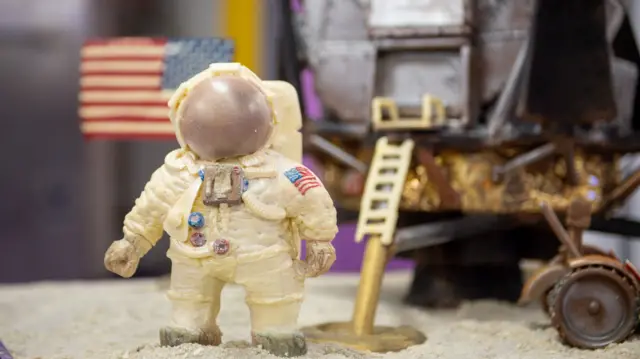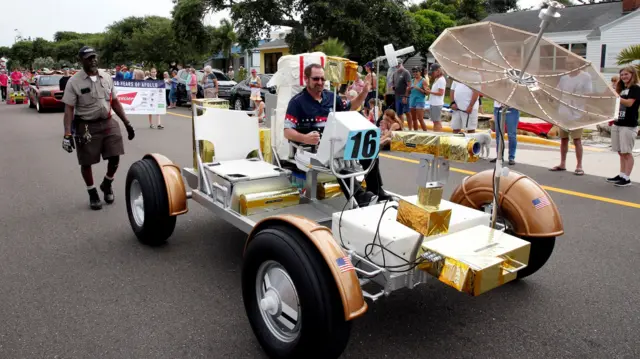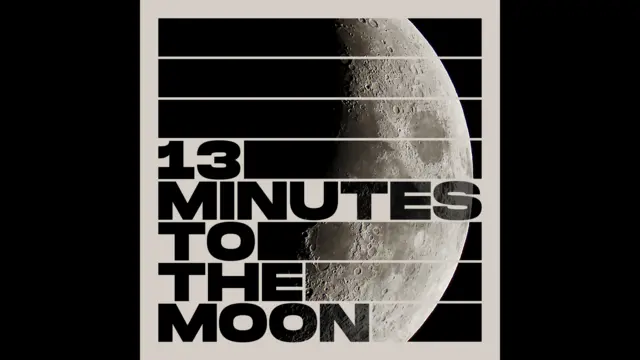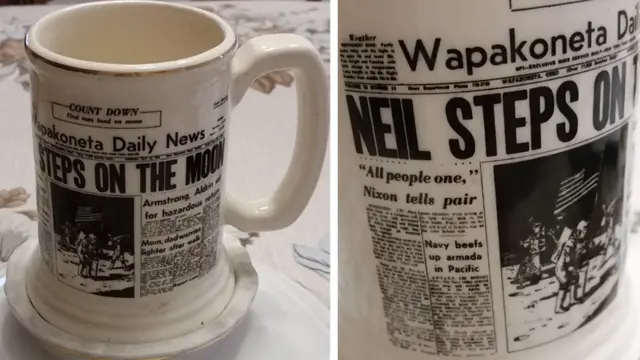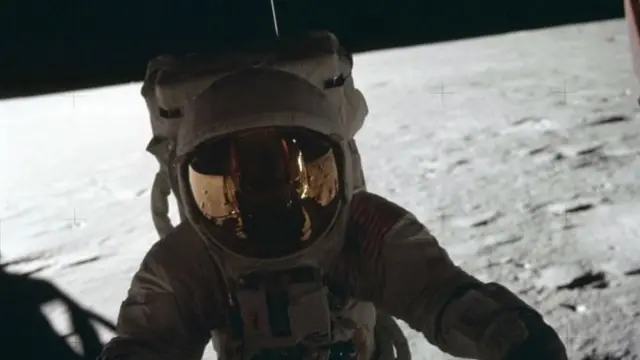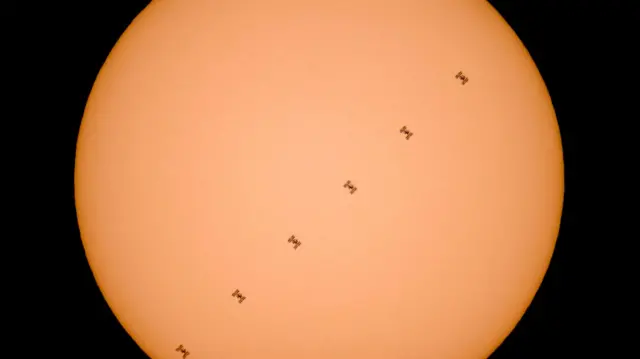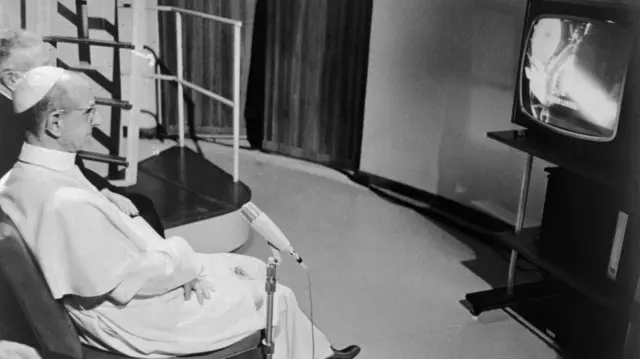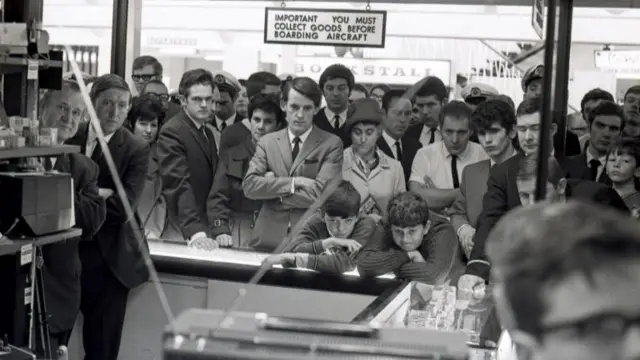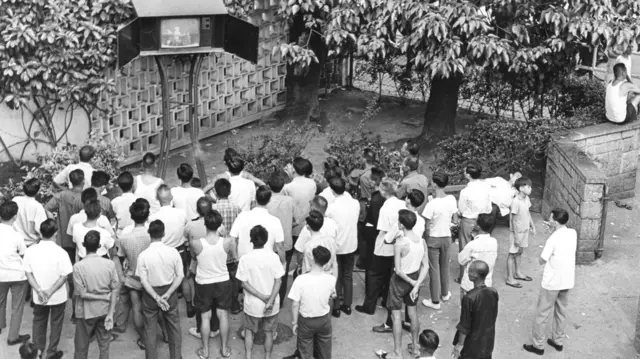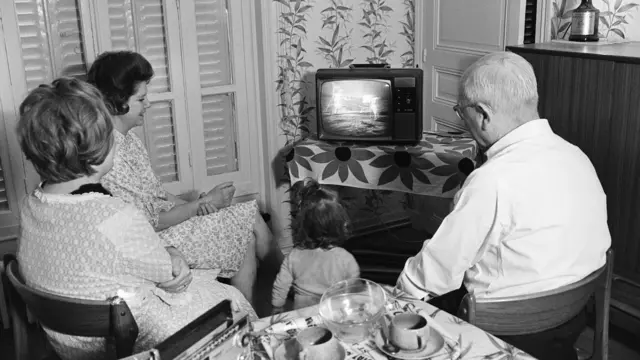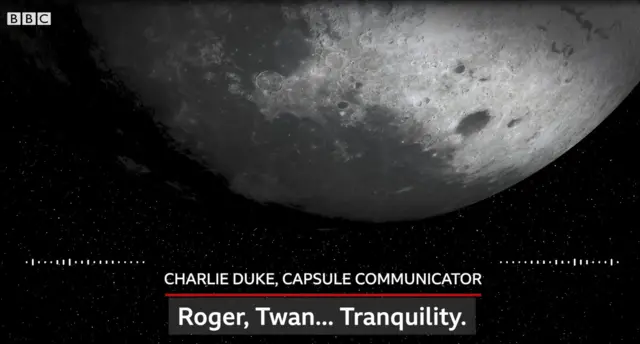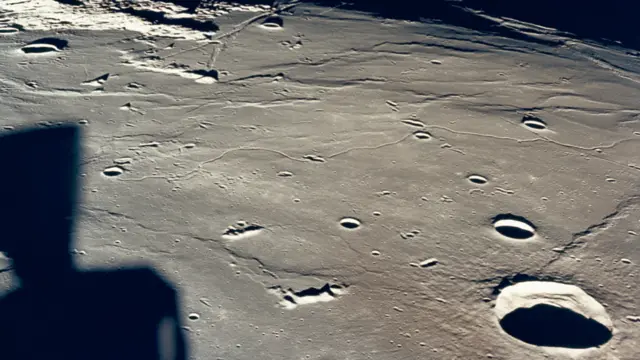Space sandwichpublished at 21:59 BST 20 July 2019
We'll leave you with this picture of Buzz Aldrin preparing a sandwich on Eagle after spending more than 2.5 hours on the lunar surface.
After seven hours of rest aboard Eagle, Houston asked Armstrong and Aldrin to prepare for the return flight to rejoin Michael Collins aboard Columbia in lunar orbit.
The three astronauts would return to Earth triumphant.
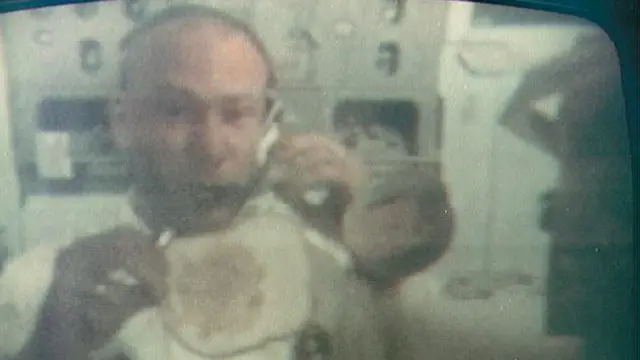 Image source, Getty Images
Image source, Getty ImagesBLT, Rog
Find out more about Apollo 11 and relive the highs and lows of the mission with the 13 Minutes to the Moon podcast.
